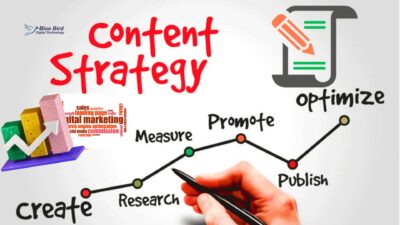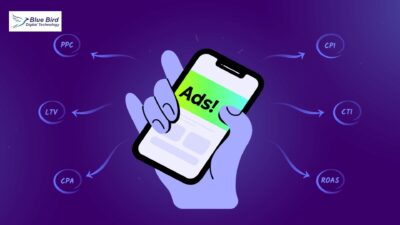In the modern business landscape, a brand’s digital presence defines its success. With consumers spending most of their time online, understanding the core components of digital marketing is not just beneficial—it is essential. This comprehensive guide explores every major pillar of digital marketing in depth, illustrating how each component contributes to creating a cohesive and effective online marketing strategy.
Search Engine Optimization (SEO)

Illustration showing the process of Search Engine Optimization
Search Engine Optimization, commonly known as SEO, is the foundation of every successful digital marketing campaign. It involves optimizing a website’s structure, content, and performance to increase its visibility on search engines like Google or Bing.
There are three main categories of SEO:
-
On-Page SEO: focuses on optimizing elements within your website—such as keywords, meta descriptions, title tags, and internal linking.
-
Off-Page SEO: involves link-building and external promotions that enhance your site’s authority.
-
Technical SEO: ensures your website’s backend (loading speed, indexing, mobile responsiveness, etc.) is efficient and accessible.
Search Engine Marketing (SEM)
While SEO focuses on organic reach, Search Engine Marketing (SEM) is the paid counterpart. It utilizes Pay-Per-Click (PPC) advertising and display ads to drive targeted traffic to your website.
SEM campaigns on platforms like Google Ads and Bing Ads allow marketers to bid on specific keywords so their ads appear at the top of search results. This ensures instant visibility, faster conversions, and measurable ROI.
Social Media Marketing
Social Media Marketing (SMM) leverages platforms such as Facebook, Instagram, LinkedIn, and X (Twitter) to engage with audiences, promote products, and build brand identity.
Through carefully crafted posts, videos, and interactive content, brands can connect with their target demographics directly. Social media also provides data-driven insights into user behavior, enabling continuous optimization of campaigns.
Content Marketing

Team developing a content marketing strategy on a digital board
The phrase “Content is King” encapsulates the importance of this component. Content Marketing revolves around creating, publishing, and distributing valuable information that attracts and retains audiences.
This could include:
-
Blogs and articles
-
Whitepapers and eBooks
-
Infographics and case studies
-
Webinars and podcasts
An effective content marketing strategy not only improves SEO rankings but also establishes thought leadership and builds long-term trust with consumers.
Email Marketing
Despite the rise of social media, Email Marketing remains one of the most powerful tools among the core components of digital marketing. It helps brands nurture leads and maintain relationships with customers through personalized messages.
A well-executed email campaign can:
-
Increase brand recall
-
Drive repeat sales
-
Promote exclusive offers
-
Encourage user engagement through newsletters
Affiliate Marketing
Affiliate Marketing is a performance-driven approach where businesses partner with affiliates (publishers or influencers) who promote their products or services in exchange for a commission.
This marketing model is cost-effective since payment is based on results—usually per sale, lead, or click. By partnering with trusted affiliates, brands gain access to new audiences and increase conversion rates.
Influencer Marketing
In today’s social-first world, Influencer Marketing is one of the most impactful core components of digital marketing. It involves collaborating with social media personalities who have significant influence over their audience’s purchasing decisions.
Brands often partner with influencers to:
-
Launch new products
-
Generate authentic reviews
-
Drive social engagement
-
Boost brand credibility
Mobile Marketing

As mobile usage surpasses desktop browsing, Mobile Marketing ensures that digital strategies reach users on their smartphones and tablets. It encompasses:
-
SMS and MMS campaigns
-
Push notifications
-
In-app advertisements
-
Mobile-friendly website design
The goal is to deliver personalized, real-time engagement that fits seamlessly into the user’s mobile experience.
Video Marketing
Video Marketing has become indispensable in digital strategies, driven by platforms like YouTube, Instagram Reels, and TikTok. Videos allow brands to communicate visually compelling messages and engage audiences emotionally.
Key video types include:
-
Product demonstrations
-
Tutorials and how-to videos
-
Customer testimonials
-
Brand storytelling campaigns
Videos not only enhance engagement but also boost conversion rates and strengthen SEO rankings.
Web Analytics
Finally, Web Analytics ties all the other components together. It involves collecting, measuring, and interpreting website data to improve decision-making.
Tools like Google Analytics, Hotjar, and SEMrush provide insights into:
-
User behavior and demographics
-
Conversion rates
-
Traffic sources
-
Campaign performance
By continuously analyzing data, marketers can refine strategies, allocate budgets efficiently, and maximize ROI—making analytics one of the most critical core components of digital marketing.
Conclusion
Understanding and integrating the core components of digital marketing is vital for sustainable growth in today’s competitive marketplace. SEO and SEM lay the foundation for visibility; content and social media create engagement; while analytics and automation ensure precision and performance.
A brand that strategically combines these ten components not only amplifies its online presence but also builds a strong, trustworthy digital identity. Success in the digital era depends not on adopting every tool, but on mastering how each component works together to achieve business objectives.


